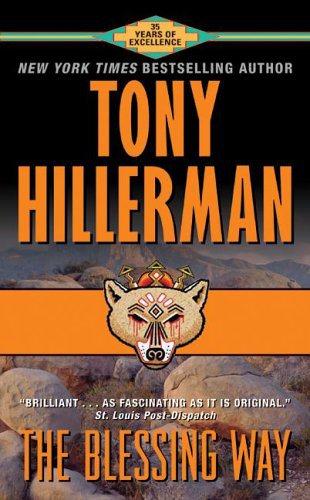***3/4
Harper Torch, 1970
ISBN 0061000019 (ISBN13: 9780061000010)
Part of the Mysteries from Every State challenge

The book introduces Lieutenant Joe Leaphorn of the Navajo Tribal Police, even though he is not the focus of the novel. However, he was a fascinating character, with a sharp mind and knowledge of both the worlds (white/Indian) he finds himself in. Through Leaphorn, Hillerman details the subtleties of Navajo culture, they way Navajos regard themselves, and the way they interact with each other as well as with outsiders.
The book takes the reader into the desert, its past and present. The landscape, Puebla ruins and unforgiving desert play a huge role in the book. Hillerman’s description of the scenery and traditions linked to the land make the reader feel like they are part of the action. The language is descriptive and the use of precise names for the flora and geology makes you feel like you are lost in the desert along with McKee.
What impressed me most about this book, and a testament to Hillerman’s talent as a writer is that despite this book having been written in 1970, it does not feel outdated. This is a rare feat, considering books like Harlan Coben’s, which make you feel like you are watching a bad 80s movie.
I was also impressed by how Hillerman manages to insert the issue of Indian child custody in the 1940s and its lasting effects, even decades later. The novel was written before the passage of the Indian Child Welfare Act (ICWA), passed in 1978, giving tribal governments a strong vice concerning custody proceedings involving Indian children.
I thought this was an interesting fact, since before ICWA, very few people other than Indian governments and tribes were concerned with the issue of Indian children being removed from their homes and placed with white families. For Hillerman, this issue comes to the foreground in this book, and he manages to weave it into the story seamlessly.
Finally, I loved that this was a traditional mystery, where the writer drops just enough breadcrumbs to allow the reader to figure out what happened and why. I have to admit, I hadn’t figured it out, but once it was revealed, I knew I could have.
I read somewhere that Hillerman said in an interview that he was embarrassed by the inaccuracies about Navajo culture in the book, despite it being well received by the Navajo people, who considered it respectful of their culture despite imprecision. Hillerman apparently did his homework before he wrote the books that followed this one in the series, making them more accurate in their depiction of Navajo culture.
Go back to Mysterious USA Reading Challenge
Go Back to Book Reviews
